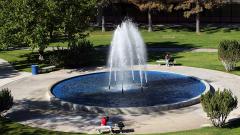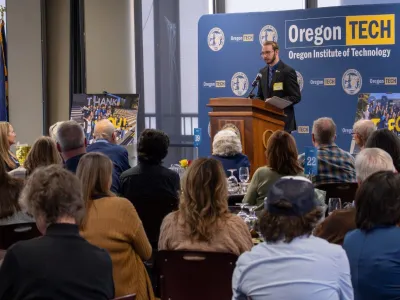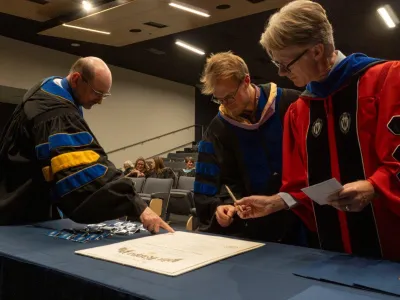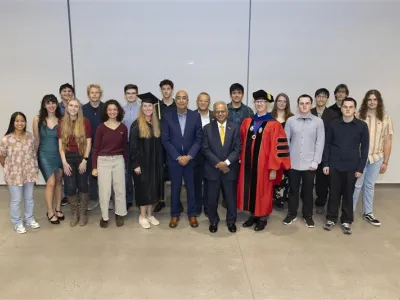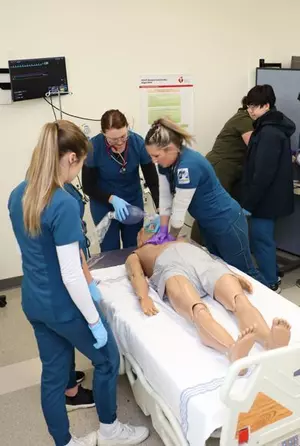
As part of the Respiratory Care program at Oregon Tech, students participated in a medical simulation May 4 with ambulance and helicopter personnel. The simulation helps students prepare for emergencies involving patient airway stabilization and transportation of a patient.
Students in Oregon Tech’s bachelor of science program learn every step in the process of handling respiratory care emergencies and regular care activities by practicing simulations.
Respiratory Care Visiting Instructor Lauren Nielsen said the simulation is part of the junior year RCP 387 - Critical Care II class, designed to provide students with the knowledge and skills necessary to care for patients requiring advanced life support.
"This exercise is an excellent example of how the program prepares students for real-world situations, giving them the opportunity to practice and refine their critical care skills before entering the clinical setting," Nielsen said.
In the May 4 scenario, students acted as respiratory therapists working for the hospital and responding to a cardiac emergency. In partnership with Klamath County Fire District 1 (KCFD1), students coordinated with ambulance personnel to transport the "patient" to a landing zone, where AirLink Critical Care Transport-Klamath Falls waited.
The simulation occurred at Oregon Tech's Klamath Falls campus, where care began in the Respiratory Care training rooms on HAL, a dummy with realistic chest cavity resistance and recoil to train students on resuscitation and emergency airway management skills.
The scenario provided to students read: A young adult male presented to the emergency department with chronic cough from seasonal allergies and a complaint of chest discomfort. Because of the patient's age and history of allergies, he is diagnosed with sore chest wall muscles. A family history significant for heart disease is indicated on the intake form but is not considered. Two days later, the patient returns to the emergency department for worsening chest discomfort. While waiting, the patient suddenly falls to the floor and becomes unresponsive.
During the simulation, students were expected to perform chest compressions, defibrillation, and emergency intubation on the patient. After successful intubation and patient stabilization on HAL, KCFD1 arrived and a student transitioned to the role of patient. KCFD1 helped students move the patient from the hospital bed to a gurney for transport to the ambulance, where AirLink employees waited. The ambulance drove the short distance to the AirLink helicopter, where students helped prepare the patient for transport and take-off.
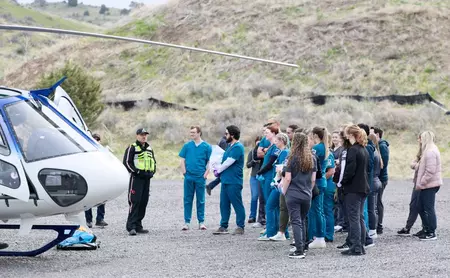
After a short helicopter flight, AirLink returned, and employees debriefed the students on the simulation and provided insight into their job in emergency care.
"The recent exercise, which simulated a code blue and transport scenario, was a valuable opportunity for the students to apply their advanced cardiac life support training and gain practical experience," Nielsen said.
The simulation is an essential component in Respiratory Care programming at Oregon Tech. Students learn every step in handling respiratory care emergencies and regular care activities by running through simulations and participating in interagency drills.
"During the simulation, the students had to work together with other medical professionals, which required them to communicate effectively, share information, and work together," Nielsen said. "By practicing these skills in a simulated environment, the students were able to build their confidence and improve their ability to work collaboratively with other medical professionals."
###



